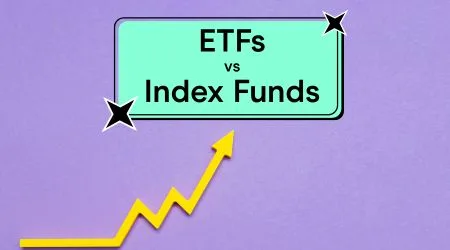Calculating the P/E
Let’s say company ABC has a current share price of $100 and an annual EPS of $10 as stated in its latest report. $100 divided by $10 is a P/E of 10. So, at the current price, you’re expecting to buy 10 years of earnings.
If you’re new to stock trading, it can be tricky to decide what to invest in and how to determine its value. If you decide to invest in a major supermarket brand, how do you choose between similar companies like Metro and Loblaw? Comparing the share prices of similar companies to calculating a stock’s value.
Many investors use ratios to decide if a stock offers a good relative value compared to its peers. Here are the 4 most basic ways to calculate a stock value.
Let’s say company ABC has a current share price of $100 and an annual EPS of $10 as stated in its latest report. $100 divided by $10 is a P/E of 10. So, at the current price, you’re expecting to buy 10 years of earnings.
While there’s no definitive P/E that’s considered “good,” over the last century the S&P 500 has averaged a P/E of slightly more than 15, which is sometimes seen as a broad threshold for fair value.
Company ABC has an estimated EPS of $11 over the next year as stated in its report. This is an increase of 10% over its current EPS of $10. Using the PEG formula of the P/E (10) divided by growth in EPS (10%), we have a PEG of 1.
Consider company XYZ. Its market price is currently $2, with 50 million shares issued. Total assets are $80 million and total liabilities are $20 million (this equals a book value of $60 million). Therefore, the P/B ratio is: $2 divided by ($60 million / 50 million) = 1.7
Companies create value and make money in different ways, so valuation ratios often depend on the company and industry. For example, a bank is valued by how many assets it has and how well it grows those assets, so the price-to-book ratio is a good measure of value. Retailers, on the other hand, aren’t looking to accumulate assets — they’re trying to sell products and make a profit. So price-to-sales or price-to-earnings ratios would be better measures of value.
In addition to the ratios above, which give you an idea of a stock’s relative value in line with similar companies, there are a couple more tips to help you figure out if a stock is priced fairly.
While relying on these analyst reports to determine intrinsic value or investment opportunities could be unwise, these reports may offer a more broad picture of a stock’s fundamentals.
Response | Gen Z | Gen Y | Gen X | Baby Boomers |
|---|---|---|---|---|
| US | 45.61% | 54.86% | 50.18% | 37.98% |
| Europe (EU) | 30.96% | 33.71% | 33.57% | 18.6% |
| UK | 29.71% | 28.86% | 30.74% | 23.26% |
| Japan | 25.94% | 25.14% | 25.09% | 13.95% |
| I would not invest in companies based in any of these countries or regions | 22.59% | 25.71% | 28.27% | 54.26% |
| China/Hong Kong | 20.5% | 19.43% | 17.31% | 3.88% |
| Australia | 20.08% | 21.14% | 24.03% | 20.16% |
| Singapore | 17.99% | 14% | 16.25% | 5.43% |
| India | 13.39% | 12.29% | 12.01% | 2.33% |
| Africa & Middle East | 12.97% | 12.29% | 10.6% |
No one wants to pay more than they need to. The basic goal of investing in stocks is to buy when the price is low and sell when it’s high to make a profit.
Valuing a company’s shares against similar companies in the market is one of the easiest ways to do this. It can help you figure out if you’re potentially paying too much for a stock, if you’ve found a bargain buy or if you’re holding onto a potentially overvalued stock.
Learn more about the basics of investing here
Because technical analysis is primarily concerned with stock price movements as shown in charts, it’s largely used for determining and following the underlying trend or market sentiment rather than measuring the value of a stock. If people are buying a stock, a technical analyst can assume that the company is creating value. If people are selling a stock, the assumption is that it isn’t worth the current price.
Fundamental analysis, on the other hand, aims to determine the intrinsic, or true, value and the relative value of the stock so that an investor or trader can anticipate whether the stock price will rise or fall to realign with that value. Fundamental analysts attempt to discover this intrinsic value based on the company’s financial statements, including its earnings and debt. Relative value is determined by comparing businesses against their peers, like comparing the price of big banks like CIBC stock with BMO stock.
You don’t have to pick one or the other, though. Investors and traders can use fundamental analysis to compile a list of stocks that are likely to be undervalued and then use technical analysis to buy or sell those stocks when the trend changes.
Now that you’re equipped with the knowledge you need to compare stocks, find an online trading platform that best suits your needs by comparing brokerage fees, available markets and more.
To make comparing even easier we came up with the Finder Score. Trading costs, account fees and features across 10+ stock trading platforms and apps are all weighted and scaled to produce a score out of 10. The higher the score the better the platform - simple.
While the value you think a company should have and the value the market is giving it can be quite different, fundamental analysis may provide early signs of opportunities or dangers that the market hasn’t yet priced in. Before investing, compare online trading platforms to find one with all the asset types and markets you want access to.

Want to invest in the Euro Stoxx 50 in Canada? Explore investment platforms and popular Euro Stoxx 50 index funds.
Read more…
Steps to owning and managing RHM, with 24-hour and historical pricing before you buy.
Read more…
Steps to owning and managing RIOT, with 24-hour and historical pricing before you buy.
Read more…
Both involve private investment, but they differ in focus, strategy and the stage at which they invest in companies.
Read more…
Should you invest in an ETF or an index fund? We break down the pros, cons, fees and how each one works, so you don’t have to guess.
Read more…
Steps to owning and managing RGC, with 24-hour and historical pricing before you buy.
Read more…Steps to owning and managing RHM, with 24-hour and historical pricing before you buy.
Steps to owning and managing RIOT, with 24-hour and historical pricing before you buy.
Should you invest in an ETF or an index fund? We break down the pros, cons, fees and how each one works, so you don’t have to guess.
These are the best renewable energy stocks to buy now in Canada.
Learn the pros and cons of futures trading, how it works and how to start trading.
Finder’s unique algorithm found the 20 best TSX stocks to buy right now.
Compare the best online trading platforms in Canada and learn how to buy stocks online.
Find out how to invest in the S&P 500 in Canada—one of the world’s most popular stock indices—to diversify your portfolio.
Steps to owning and managing META, with 24-hour and historical pricing before you buy.
Steps to owning and managing Amazon stock (AMZN), with 24-hour and historical pricing before you buy.